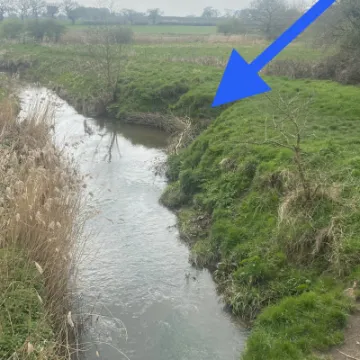Riverbank Protection at Hockenhull Platts






Many residents of and visitors to Tarvin enjoy walking down Platts lane to the Packhorse Bridges at Hockenhull Platts. This area is designated a nature reserve. Cheshire Wildlife Trust manage the reserve by agreement with the Duke of Westminster's Grosvenor (Eaton) Estates and it is enjoyed by walkers, nature lovers and bird watchers alike. It has an especially rich variety of birdlife, over 70 bird species have been spotted around this area including Kingfisher, woodpeckers and summer-visiting warblers, including sedge warbler, grasshopper warbler and reed warbler.
Regular visitors to Hockenhull Plats Nature Reserve, aka "the Roman Bridges" or "The Packhorse Bridges" may have seen some alterations to the riverbank of late. Tarvin Online were informed by a local resident that Cheshire Wildlife Trust were working on the riverbank in March of this year. TOL sent a request for information to Cheshire Wildlife Trust. The reserve manager has sent the following response:
"Erosion and deposition are natural processes in healthy, dynamic waterways. However, human influence can cause higher levels of erosion. This can be problematic and have knock-on effects to the environment.
At Hockenhull Platts, there is a section of the riverbank that has been gradually disappearing for decades. Most of the riverbank is well vegetated, with the structure of plants and their roots helping to bind the soil together. However, in a small section near the central packhorse bridge there is a high level of disturbance caused by people and dogs entering the river. The vegetation is never given the chance to recover and so the soil stays bare throughout the year. This can be a real problem in the winter months when river levels are higher, leading to further erosion. The erosion on this section has started to undercut the bank which will eventually lead to its collapse.
The collapse of this part of the reserve would prevent machinery and livestock from getting onto the nature reserve, both of which are crucial to the site’s management. Over the years this section has been getting narrower and narrower and access is becoming increasingly difficult, or even dangerous. By acting now, we are ensuring that Hockenhull Platts can continue to support the important wild plants and animals that live and feed here.
To try and prevent further erosion, we have constructed a short section of willow spilling made from entirely natural materials. Willow spilling is a technique that has been used successfully across the country for centuries. It will hopefully slow the water down and allow for sediments to build up naturally behind it over time. The willow should also regrow and provide a strong root structure, acting as a natural barrier, thereby preventing further erosion and material loss. As the river is an ever-changing ecosystem, we will continue to review the success of this countermeasure and more work may be needed over time. Depending on the success of the willow spilling, we may need to further backfill or investigate other options.
Hockenhull Platts is a very special place for many and offers beautiful walks through a nature-rich environment. Ultimately, we do not want to discourage local people from using the site. By giving nature a helping hand, we can increase its resilience and allow it to continue to be a wildlife haven for generations to come. "
Ed: We hope that this serves as an explanation of the work and why it has been done.
Quick Links
Get In Touch
TarvinOnline is powered by our active community.
Please send us your news and views.






